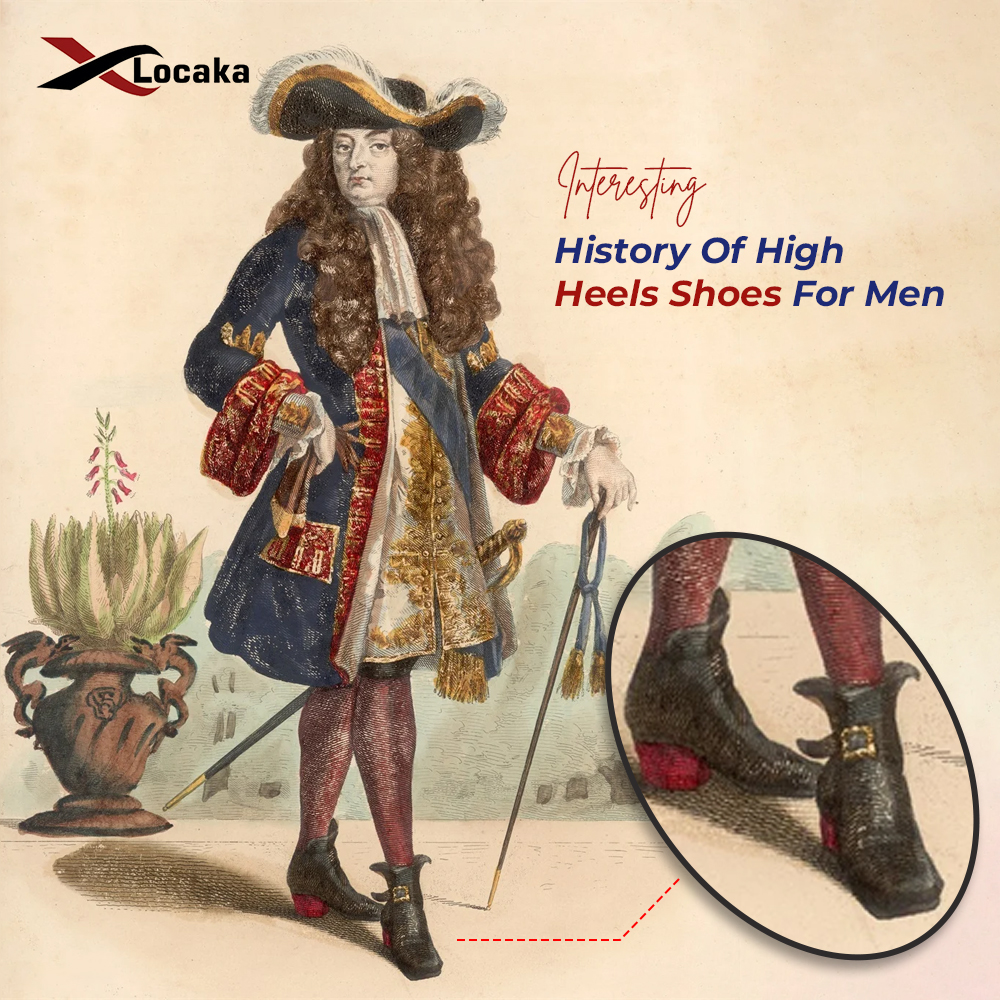Interesting History Of High Heels Shoes For Men

High heels have become synonymous with women’s footwear in the ever-evolving fashion world. They add a touch of sophistication and class to any outfit, but did you know high heels were first made for men?
Yes, you heard it right. The history of men’s high heels goes back centuries. It’s a story that spans cultures, social classes, and even genders.
High heels have always been a hot topic in the world of fashion. They’ve graced countless runways, adorned the feet of celebrities, and been the secret weapon for many to boost their confidence.
Let’s get to know the exciting history of high heels shoes for men.
Ancient Persian scripture showing men wearing high heel shoes
Image credit: Google Arts & Culture
High heels gradually made their way to Europe, where they took on a different role. In the 17th century, the wearing of high heels by European upper-class men became a symbol of nobility and status. Heels were decorated and often taken as a person’s position in social setup. During this era, high heels evolved from being practical to being a bold fashion statement.
The European Renaissance
Fast forward to the sixteenth century, the Renaissance, when high heels were all the rage in Europe. Men everywhere were wearing heels as a sign of power and status. Royalty in France and England were big fans of high heels because it showed off their wealth and status. The higher up you went, the more powerful and influential you were.
King Louis XIV’s Love for High Heels
High heels have been around for a while, but they took off during the reign of Louis XIV of France. He was known as the “Sun King” and obsessed with wearing heels. He would often wear them to show off his power.
Louis XIV loved high heels shoes.
Image credit: Google Arts & Culture
Louis XIV’s obsession with heels encouraged the French nobility to wear them, too, cementing the link between high heels and royalty.
Emerged as a Symbol of Masculinity
It is remarkable to note that high heels were not exclusive to the upper class. Men from all walks of life in seventeenth-century Europe adopted the habit of wearing high heels. Heels were seen as a symbol of masculine prowess, conveying a man’s strength and bravery. It was not unusual for soldiers to wear high heels in battle, giving them an impressive height advantage over their adversaries.
Transition to Women’s Fashion
As time passed, high heels transitioned to women’s fashion. In the 18th century, high-heeled shoes designed specifically for women began to gain popularity. This shift was driven by fashion trends and a desire to create a more graceful and delicate appearance. High heels started to symbolize femininity and elegance.
Fast forward to the present, and high heels have firmly established themselves as an essential part of women’s fashion. Whether you’re looking for a formal wedding or height-increasing shoes, high heels can fulfill both style and functional requirements.
Stylish Legacy and a Fashionable Future with Locaka
The story of men’s high heels is fascinating, reflecting the ever-evolving nature of fashion and social trends. From the ancient world to the European nobility court, high heels significantly impacted the definition of power, position, and fashion. As we come to the end of this story, it is essential to recognize that elevated footwear is alive and well. In the modern era, there is a renewed enthusiasm for height-increasing shoes among many celebrities, which are aesthetically pleasing and provide practical elegance.
If you want to add an element of refinement to your look, Locaka is the place to go. Our curated collection of men’s height-increasing shoes will help you move forward confidently and elevate your appearance. Take this opportunity to take your style to the next level by visiting our website and browsing our latest designs that combine traditional and modern fashion.


